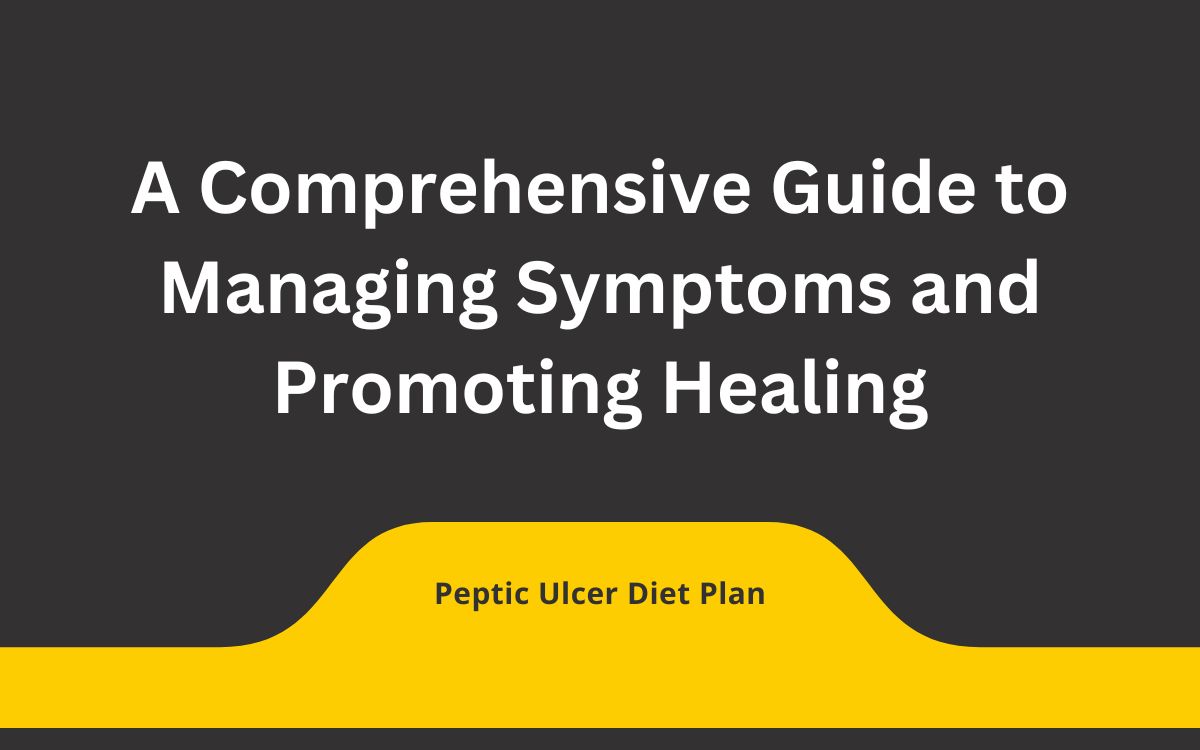The Ultimate Peptic Ulcer Diet Plan: A Comprehensive Guide to Managing Symptoms and Promoting Healing
Peptic ulcers are painful sores that form in the lining of the stomach, esophagus, or small intestine. They are caused by a combination of factors, including the bacteria Helicobacter pylori and the use of nonsteroidal anti-inflammatory drugs (NSAIDs). While medication can help to treat peptic ulcers, a proper diet plan can also play a crucial role in managing the symptoms and promoting healing.

A peptic ulcer diet plan should focus on providing the body with the nutrients it needs to heal and reducing the factors that can worsen the ulcer symptoms. Here are some of the key components of a peptic ulcer diet plan:
- Limit acidic foods: Foods that are high in acid, such as citrus fruits, tomatoes, and spicy foods, can irritate the ulcer and worsen symptoms. It is best to limit these foods or avoid them altogether.
- Eat small, frequent meals: Eating smaller meals more frequently can help to reduce the amount of acid in the stomach, which can help to reduce symptoms. Try to eat at least 5-6 small meals throughout the day.
- Avoid fasting: Fasting can increase the amount of acid in the stomach, which can worsen symptoms. It is best to avoid fasting and to eat something small every 2-3 hours.
- Incorporate high-fiber foods: High-fiber foods, such as whole grains, fruits, and vegetables, can help to absorb excess acid and promote healing. Aim to include at least 25 grams of fiber in your daily diet.
- Choose lean proteins: Lean proteins, such as poultry, fish, and tofu, can help to reduce inflammation and promote healing. Avoid fatty foods, such as red meat and fried foods, as they can increase acid production.
- Limit caffeine and alcohol: Both caffeine and alcohol can increase acid production and worsen symptoms. It is best to limit or avoid these drinks altogether.
- Stay hydrated: Staying hydrated can help to flush out the acid in the stomach and reduce symptoms. Aim to drink at least 8 glasses of water a day and limit the consumption of acidic drinks, such as soda.
In addition to these guidelines, it is also important to listen to your body and avoid foods that worsen your symptoms. Some people may find that certain foods, such as dairy products or wheat, trigger their symptoms and may need to avoid these foods altogether.
A peptic ulcer diet plan should also aim to provide the body with the nutrients it needs to heal. This includes:
- Vitamin C: Vitamin C helps to support the immune system and promote healing. Aim to include foods high in vitamin C, such as oranges, strawberries, and bell peppers, in your diet.
- Vitamin E: Vitamin E is an antioxidant that helps to reduce inflammation and promote healing. Foods high in vitamin E include almonds, avocado, and sweet potato.
- Zinc: Zinc is an essential mineral that is important for immune function and wound healing. Foods high in zinc include oysters, beef, and chickpeas.
- Iron: Iron is important for the production of red blood cells and can help to prevent anemia. Foods high in iron include red meat, poultry, and spinach.
A peptic ulcer diet plan should also aim to reduce stress, as stress can increase acid production and worsen symptoms. This can be achieved through exercise, relaxation techniques, and a balanced diet that includes plenty of fruits, vegetables, and lean proteins.
In conclusion, a peptic ulcer diet plan should aim to provide the body with the nutrients it needs to heal and reduce the



